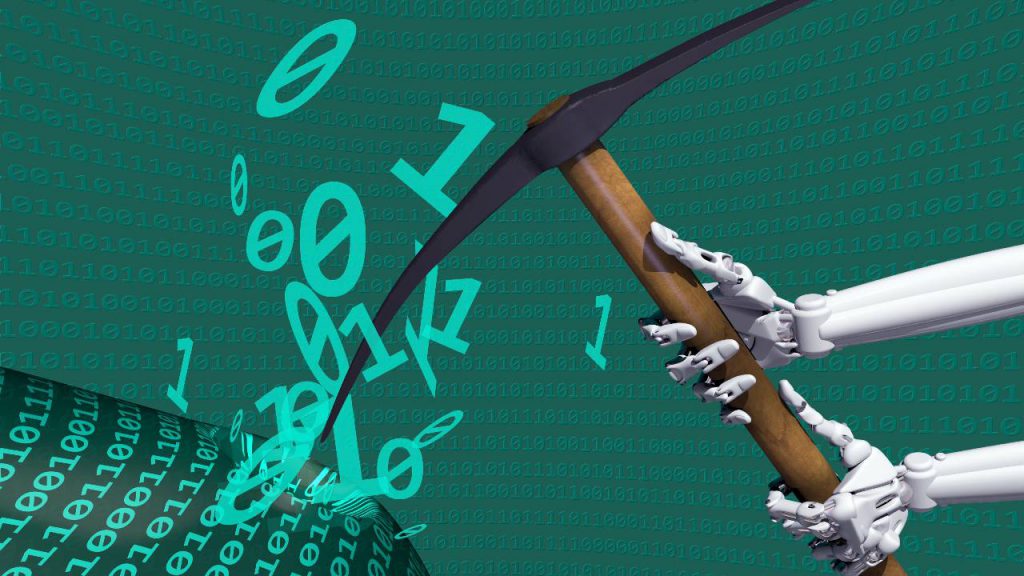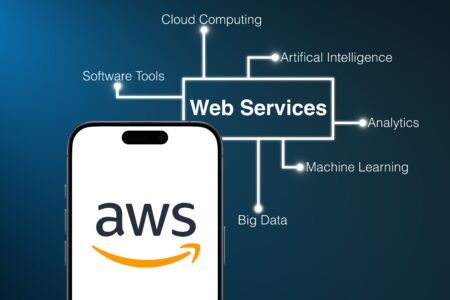The demand for AI and robotic process automation software continues to rise, especially in response to the pandemic. The many challenges of last year forced many businesses to rethink their operations and look at ways to cut costs and increase productivity. Process mining makes it possible for companies to streamline day-to-day operations and work as efficiently as possible.
What Is Process Mining? What Are the Benefits?
Understanding process mining is essential for businesses to reach their full potential in today’s work environment. Process mining makes it possible for organizations to streamline and automate various functions by recognizing best practices to use across the company. Over time, process mining reduces waste by using resources more efficiently while also responding quickly to internal and external changes. Gartner estimates that the market for process mining tools expanded from $110 million in 2018 to over $320 million in 2019.
The many challenges of 2020 forced companies to focus more on efficiency for maintaining business operations. Organizations realize that the behavior of their employees and clients has changed due to the pandemic, as process mining makes it possible to see how everything works together. Many of these businesses have a general understanding of processes, but it often doesn’t match reality, as most managers don’t know how the process truly works. However, process mining uses actual data, making it possible to understand the process without having to guess or use your imagination.
Sometimes process mining can highlight a significant difference in how executives imagine a business process operates compared to how it works in reality.
Differences With Process Mining and Robotic Process Automation (RPA)
Understanding what is robotic process automation is critical for organizations. Robotic process automation software and low-code tools are beginning to use process mining for modeling current workflows to develop a template for creating new automation. Sometimes robotic process automation occurs after process mining. Typically, process mining focuses on mining data logs from various applications, such as CRM and ERP, to create an accurate model for a business process. These models can generate robotic process automation programs, which are also labeled as software bots or robots.
These programs are often complemented by other tools used in business process management and modeling. Legacy tool providers are beginning to use process mining functions as demand continues to rise. One of the primary benefits of legacy tool providers is their many years of experience recognizing and remediating harmful types of processes.
Many organizations find it challenging to scale more than a few bots because they are trying to automate a flawed process that cannot scale. The majority of companies are automating the process through robotic process automation and hyper-automation without understanding their data.
As more businesses look at ways to improve efficiency, there is a growing debate about choosing to automate existing processes or fix the problem first. Automating a bad process can often make it faster, but it will most likely still suffer from various chokepoints created by integrating legacy systems. However, process mining can play a crucial role in repairing a flawed process before automation.
Process mining allows businesses to see which parts of their company are standardized, as it’s important to standardize a process before automation.
How Task Mining Connects Everything
The traditional data mining process is being enhanced to offer more information. Task mining employs computer vision applications that operate on a desktop to document how a user performs a task. This data mining process compliments process mining by providing more information about each step, which may be missed on application logs.
Task mining works on the user desktop, making it compatible with any application using a graphical user interface. Most task-mining tools can easily capture the various steps involved with multiple users in a process. This flexibility improves process discovery, which helps to make invisible patterns visible in the real world.
Another advantage is that artifacts can be a starting point to code RPA bots, as they also operate by using a GUI interface. Process discovery can easily capture user actions, which provides more automation opportunities for robotic process automation software.
Why Process Mining Sees the Invisible
Process mining allows you to see the once invisible workflows in organizational nodes by processing application logs for monitoring ongoing processes and creating process maps.
Improvements across AI and the use of integrated cloud services make it more feasible to scale and automate process mining that improves the speed of understanding business processes. Ultimately, process mining is similar to creating a new sensory system for all types of organizations to give them a much-needed edge over competitors.
Process mining makes it possible to break down data silos across different areas of an organization. These internal data silos offer transparency in end-to-end processes by making these operations measurable and giving you additional insights into making better business decisions across all levels of your organization. Many companies will begin to use process management to quickly react to new circumstances, whether it’s regulatory changes in the market or technology.
Leading Players in the Data Mining Process
Several companies have already found success in process mining by helping companies respond to the pandemic. The data mining process makes it possible to track and integrate new regulations and processes in one location. Process mining also makes it possible to locate any performance issues and dramatically reduce communication costs within the organization.
SAP recently announced the purchase of Signavio, which introduces one of the biggest software giants to the data mining process market. Initially, the market only consisted of small players, but the landscape in process mining is rapidly changing. Other process mining vendors in the market include Cognitive Technology, FortressIQ, Everflow, Lana Labs, Minit, Process Analytics Factory, and many more companies.
Many of the top robotic process automation vendors are beginning to invest in developing their process mining capabilities. For example, UIPath recently created its internal tools before purchasing Process Gold in 2019. UIPath also purchased StepShot to gain access to its task-mining tools. Other companies have created their own data mining process tools, such as Automation Anywhere. At the same time, Blue Prims published a task mining solution and is also working with numerous companies offering process mining capabilities.
Other robotic process automation companies are also developing their process mining abilities. Several digital transformation tool providers also provide process mining functions as part of their services, such as Software AG, Signavio, and Bizagi.
In the future, expect to see top SaaS providers developing process mining services. These providers may offer better integration due to the context gained from other applications. Many of these top platform providers will benefit from using an embedded model, as process mining technology is natively occurring as a core business application instead of a separate toolset.
This process is already happening with AI and BI tooling. ServiceNow and other enterprise software vendors offer AI and BI tooling that’s already built-in each of these tools. These software vendors will most likely provide process mining technology natively through acquisitions, organic builds, or OEM partnerships. These tools are also familiar with best practices associated with their application and understand how to use their individual audit logs.
Why Process Mining is Important for Security
Cybersecurity experts are beginning to use process mining to offer an added layer of security for applications. Many security tools have often focused on providing monitoring services for infrastructure, but hackers are now using more complex and subtle attacks. However, data process mining can play a key role in identifying subtle anomalies. Over time, data process mining will become one of the top methods for dealing with complex attacks. Process mining is especially effective at identifying threats that eventually manifest themselves over time.
Many leading-edge businesses are beginning to use process mining for capturing data about activities in factories and warehouses or even how employees build items. These tools offer a great opportunity to understand better warehouse management systems and manufacturing execution systems that are widely used in facilities and factories.
For example, Drishti is a startup that created apps for automating time and motion analysis for detailed studies on workers. These apps make it possible to notify a human operator if they ever forget a step, or it can be used to highlight best practices that make it easier to train new operators. This technology can also identify any quality issues during the manufacturing process. Some of the early users of this innovative technology have already noticed a significant reduction in training time and costs for employees.
Knowledge about business processes often disappears over time as companies evolve. However, process mining can play a key role in understanding how these processes operate, allowing companies to create documentation and process maps to develop a knowledge base for this information.
A Few Challenges of Process Mining
Despite the many advances in process mining, a few challenges need to be overcome to maximize efficiency. For example, this technology works great with fully automated processes, but most business processes use a variety of applications for providing customer service.
Process mining tools may also lack the context to determine value compared to traditional mapping. A process may include steps that don’t offer value or recommend automating a simple process to fix a problem that’s no longer relevant. In these events, the organization will spend additional time automating a wasteful process. These type of scenarios is how traditional process mapping can help your business avoid these costly errors.
Some people believe that the latest advances in hyper-automation, AI, and process discovery will help fill these gaps. The use of complementary tools has also played a key role in helping process mining evolve. Process mining is used for process discovery and intelligence tools, which can alleviate some of the deficiencies in using this technology.
Process intelligence tools combine these functions to create greater visibility for each step that occurs throughout a process cycle, whether it’s at the user or system level. This technology significantly increases the number of use cases. It offers an opportunity for measuring and assessing various elements, whether it’s procedural compliance, productivity levels for individuals or teams, identifying opportunities for optimization, or creating training documents.
How to Keep Humans Involved
Over the long term, process mining will be successful by getting buy-in from humans to ensure it reaches its fullest potential. Like other types of automation, process mining can potentially threaten various jobs, create more challenging tasks, and decrease the connection between employees and customers. The greatest challenge in adopting new technology is getting humans involved to maximize its output.
Other concerns include intrusive monitoring that can create privacy problems, making a big challenge in maintaining compliance with new laws, such as the GDPR in the European Union. While these tools offer a lot of promise, they can also pose unique obstacles due to the amount of data it collects. Businesses will need to reach out to risk management teams during the beginning stages to successfully deploy this technology while overcoming various obstacles.
Organizations may also struggle with the implications of using process discovery tools to gather information at the use or task level. The company’s culture will play a big part in determining how to deploy these tools, such as the type of information collected, consent requirements, or if you plan on using continuous process monitoring on employees.
Companies will experience the biggest gains by looking at ways to reward employees who adopt this technology instead of imposing process mining on each worker. Process mining offers an excellent opportunity to scale efficiency, adaptability and learning across the organization to help businesses reach their full potential.
___________________________________________________________________________________
If you are looking to learn more about Robotic Process Automation, then join us on May 20th at 11am ET for our free RPA Expo digital event. This three-hour event will feature short-form, to-the-point discussions to set the standard in delivering an accelerated master class on the application of RPA to drive business, process, and customer value.
___________________________________________________________________________________
Related DAC Content
Are SMBs Ready for Robotic Process Automation?
Navigating the RPA Landscape: Interview with Antti Viitala of Synpulse Consulting
Robotic Process Automation (RPA) 101
Back @ IT: Industries Are Feeling the Impact of RPA
Benefits of RPA Robotic Process Automation Software Technology






